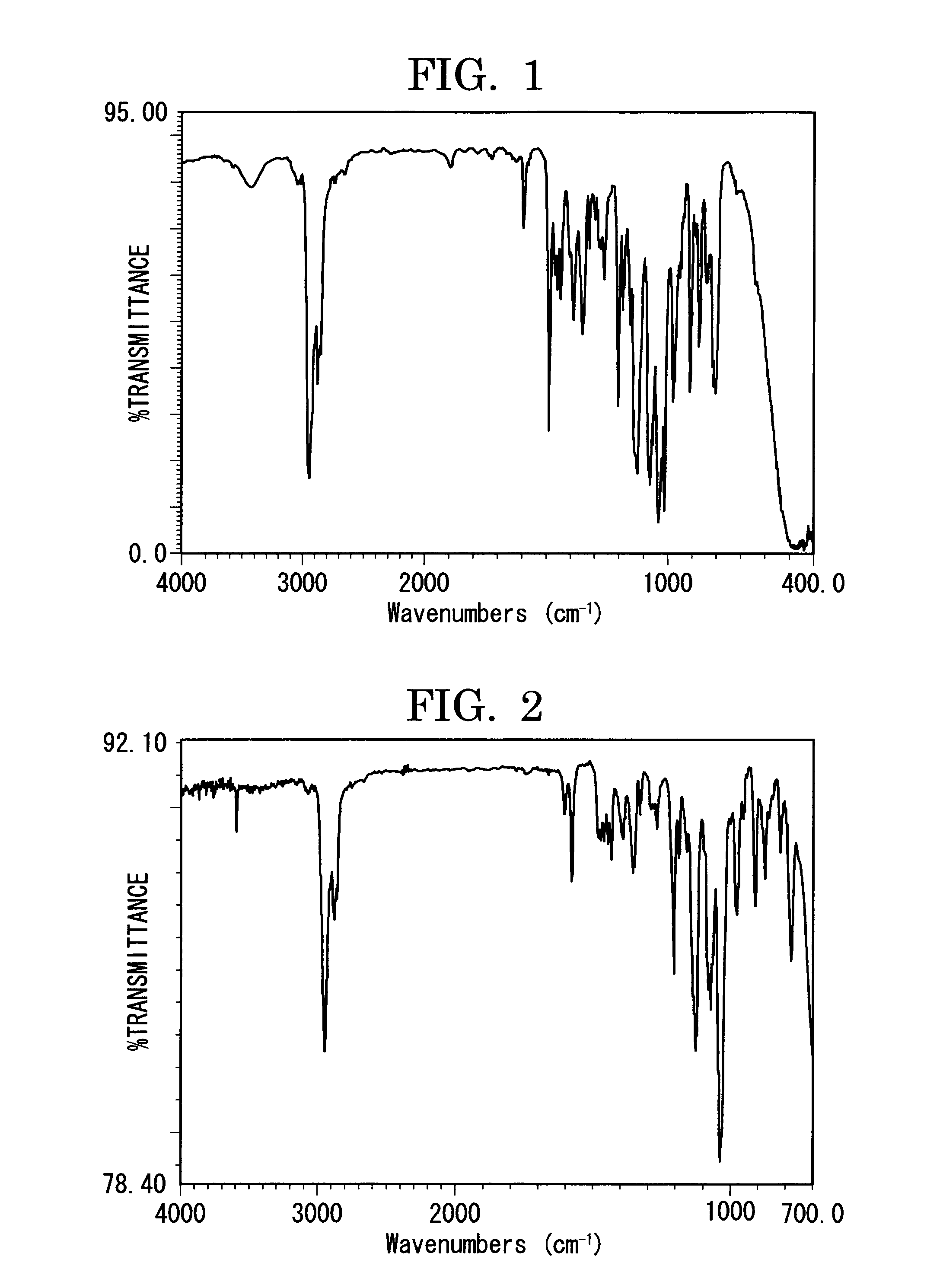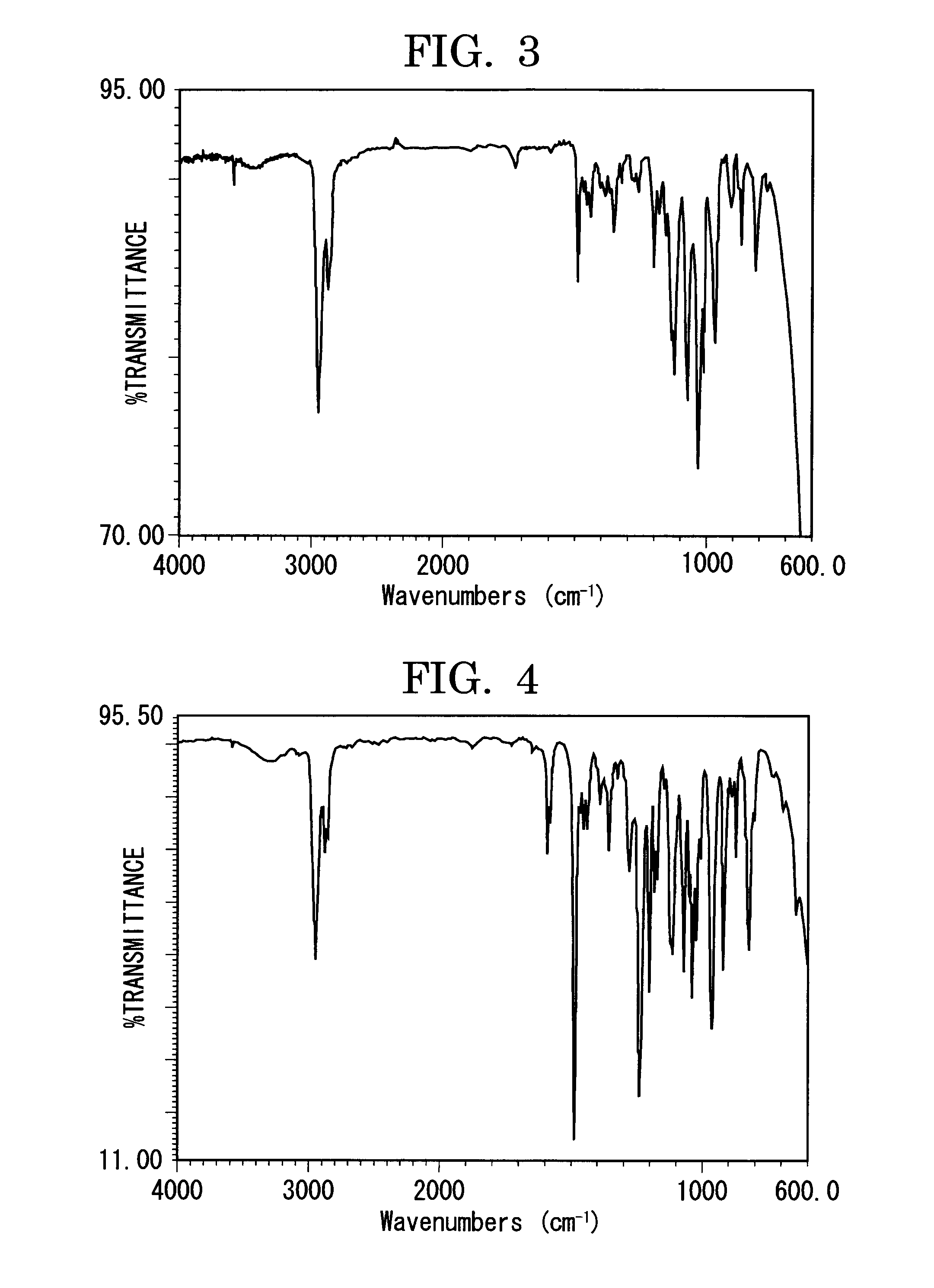Electrophotographic photoconductor, and image forming method, image forming apparatus, and process cartridge using the electrophotographic photoconductor
a photoconductor and electrophotography technology, applied in the field of electrophotographic photoconductor, can solve the problems of accelerating abrasion of the photoconductor, reducing the image density, and disadvantageous abrasion of the organic photoconductors, and achieve excellent mechanical durability, excellent electrical characteristics, and high durability
- Summary
- Abstract
- Description
- Claims
- Application Information
AI Technical Summary
Benefits of technology
Problems solved by technology
Method used
Image
Examples
synthesis example 1
Synthesis of Halogen Intermediate
[0287]The reaction formula of Synthesis Example 1 is given below.
[0288]A four-neck flask was charged with 4-bromobenzyl alcohol (50.43 g), 3,4-dihydro-2H-pyran (45.35 g) and tetrahydrofuran (150 mL). The mixture was stirred at 5° C., and p-toluenesulfonic acid (0.512 g) was added to the four-neck flask. The resultant mixture was stirred at room temperature for 2 hours, and then extracted with ethyl acetate, dehydrated with magnesium sulfate, and adsorbed onto active clay and silica gel. The mixture was filtrated, washed and concentrated to obtain a compound of interest (yield: 72.50 g, a colorless oily product).
[0289]FIG. 1 shows an infrared absorption spectrum (KBr tablet method) of the compound obtained in Synthesis Example 1.
synthesis example 2
Synthesis of Halogen Intermediate
[0290]The reaction formula of Synthesis Example 2 is given below.
[0291]A four-neck flask was charged with 3-bromobenzyl alcohol (25.21 g), 3,4-dihydro-2H-pyran (22.50 g) and tetrahydrofuran (50 mL). The mixture was stirred at 5° C., and p-toluenesulfonic acid (0.259 g) was added to the four-neck flask. The resultant mixture was stirred at room temperature for 1 hour, and then extracted with ethyl acetate, dehydrated with magnesium sulfate, and adsorbed onto active clay and silica gel. The mixture was filtrated, washed and concentrated to obtain a compound of interest (yield: 36.84 g, a colorless oily product).
[0292]FIG. 2 shows an infrared absorption spectrum (KBr tablet method) of the compound obtained in Synthesis Example 2.
synthesis example 3
Synthesis of Halogen Intermediate
[0293]The reaction formula of Synthesis Example 3 is given below.
[0294]A four-neck flask was charged with 2-(4-bromobenzyl)ethylalcohol (25.05 g), 3,4-dihydro-2H-pyran (20.95 g) and tetrahydrofuran (50 mL). The mixture was stirred at 5° C., and p-toluenesulfonic acid (0.215 g) was added to the four-neck flask. The resultant mixture was stirred at room temperature for 3 hours, and then extracted with ethyl acetate, dehydrated with magnesium sulfate, and adsorbed onto active clay and silica gel. The mixture was filtrated, washed and concentrated to obtain a compound of interest (yield: 35.40 g, a colorless oily product).
[0295]FIG. 3 shows an infrared absorption spectrum (KBr tablet method) of the compound obtained in Synthesis Example 3.
PUM
| Property | Measurement | Unit |
|---|---|---|
| boiling point | aaaaa | aaaaa |
| volume resistivity | aaaaa | aaaaa |
| temperature | aaaaa | aaaaa |
Abstract
Description
Claims
Application Information
 Login to View More
Login to View More - R&D
- Intellectual Property
- Life Sciences
- Materials
- Tech Scout
- Unparalleled Data Quality
- Higher Quality Content
- 60% Fewer Hallucinations
Browse by: Latest US Patents, China's latest patents, Technical Efficacy Thesaurus, Application Domain, Technology Topic, Popular Technical Reports.
© 2025 PatSnap. All rights reserved.Legal|Privacy policy|Modern Slavery Act Transparency Statement|Sitemap|About US| Contact US: help@patsnap.com



